Russia,[b] or the Russian Federation,[c] is a country spanning Eastern Europe and North Asia. It is the largest country in the world by area, extending across eleven time zones and sharing land borders with fourteen countries.[d] It is the world's ninth-most populous country and Europe's most populous country. Russia is a highly urbanised country including 16 population centres with over a million inhabitants. Its capital and largest city is Moscow. Saint Petersburg is Russia's second-largest city and its cultural capital.
The East Slavs emerged as a recognised group in Europe between the 3rd and 8th centuries CE. The first East Slavic state, Kievan Rus', arose in the 9th century, and in 988, it adopted Orthodox Christianity from the Byzantine Empire. Kievan Rus' ultimately disintegrated; the Grand Duchy of Moscow led the unification of Russian lands, leading to the proclamation of the Tsardom of Russia in 1547. By the early 18th century, Russia had vastly expanded through conquest, annexation, and the efforts of Russian explorers, developing into the Russian Empire, which remains the third-largest empire in history. However, with the Russian Revolution in 1917, Russia's monarchic rule was abolished and eventually replaced by the Russian SFSR—the world's first constitutionally socialist state. Following the Russian Civil War, the Russian SFSR established the Soviet Union with three other Soviet republics, within which it was the largest and principal constituent. At the expense of millions of lives, the Soviet Union underwent rapid industrialisation in the 1930s and later played a decisive role for the Allies in World War II by leading large-scale efforts on the Eastern Front. With the onset of the Cold War, it competed with the United States for ideological dominance and international influence. The Soviet era of the 20th century saw some of the most significant Russian technological achievements, including the first human-made satellite and the first human expedition into outer space.
In 1991, the Russian SFSR emerged from the dissolution of the Soviet Union as the Russian Federation. A new constitution was adopted, which established a federal semi-presidential system. Since the turn of the century, Russia's political system has been dominated by Vladimir Putin, under whom the country has experienced democratic backsliding and become an authoritarian dictatorship. Russia has been militarily involved in a number of conflicts in former Soviet states and other countries, including its war with Georgia in 2008 and its war with Ukraine since 2014, which has involved the internationally unrecognised annexations of Ukrainian territory including Crimea in 2014 and four other regions in 2022 during an ongoing invasion.
Russia is a permanent member of the United Nations Security Council; a member state of the G20, SCO, BRICS, APEC, OSCE, and WTO; and the leading member state of post-Soviet organisations such as CIS, CSTO, and EAEU/EEU. It possesses the largest stockpile of nuclear weapons and has the third-highest military expenditure. Russia is generally considered a great power and is a regional power. Internationally, Russia ranks very low in measurements of democracy, human rights and freedom of the press; the country also has high levels of perceived corruption. As of 2024, Russia has a high-income economy which ranks eleventh in the world by nominal GDP and sixth at purchasing power parity, relying on its vast mineral and energy resources; the world's second-largest for oil production and natural gas production. Russia is home to 30 UNESCO World Heritage Sites.
Etymology
Main article: Names of Rus', Russia and Ruthenia
According to the Oxford English Dictionary, the English name Russia first appeared in the 14th century, borrowed from Medieval Latin: Russia, used in the 11th century and frequently in 12th-century British sources, in turn derived from Russi, 'the Russians' and the suffix -ia.[22][23] In modern historiography, this state is usually denoted as Kievan Rus' after its capital city.[24] Another Medieval Latin name for Rus' was Ruthenia.[25]
In Russian, the current name of the country, Россия (Rossiya), comes from the Byzantine Greek name for Rus', Ρωσία (Rosía).[26] A new form of the name Rus', Росия (Rosiya), was borrowed from the Greek term and first attested in 1387.[27][failed verification] The name Rossiia appeared in Russian sources in the late 15th century, but until the end of the 17th century the country was more often referred to by its inhabitants as Rus', the Russian land (Russkaia zemlia), or the Muscovite state (Moskovskoe gosudarstvo), among other variations.[28][29][30] In 1721, Peter the Great changed the name of the state from Tsardom of Russia (Russian: Русское царство, romanized: Russkoye tsarstvo) or Tsardom of Muscovy (Russian: Московское царство, romanized: Moskovskoye tsarstvo)[31][32] to Russian Empire (Rossiiskaia imperiia).[28][30]
There are several words in Russian which translate to "Russians" in English. The noun and adjective русский, russkiy refers to ethnic Russians. The adjective российский, rossiiskiy denotes Russian citizens regardless of ethnicity. The same applies to the more recently coined noun россиянин, rossiianyn, "Russian" in the sense of citizen of the Russian state.[29][33]
According to the Primary Chronicle, the word Rus' is derived from the Rus' people, who were a Swedish tribe, and where the three original members of the Rurikid dynasty came from.[34] The Finnish word for Swedes, ruotsi, has the same origin.[35] Later archeological studies mostly confirmed this theory.[36][better source needed]
History
Main article: History of Russia
Early history
Further information: Ancient Greek colonies, Early Slavs, Huns, Turkic expansion, and Prehistory of Siberia
See also: Proto-Indo-Europeans and Proto-Uralic homeland
The first human settlement on Russia dates back to the Oldowan period in the early Lower Paleolithic. About 2 million years ago, representatives of Homo erectus migrated to the Taman Peninsula in southern Russia.[37] Flint tools, some 1.5 million years old, have been discovered in the North Caucasus.[38] Radiocarbon dated specimens from Denisova Cave in the Altai Mountains estimate the oldest Denisovan specimen lived 195–122,700 years ago.[39] Fossils of Denny, an archaic human hybrid that was half Neanderthal and half Denisovan, and lived some 90,000 years ago, was also found within the latter cave.[40] Russia was home to some of the last surviving Neanderthals, from about 45,000 years ago, found in Mezmaiskaya cave.[41]
The first trace of an early modern human in Russia dates back to 45,000 years, in Western Siberia.[42] The discovery of high concentration cultural remains of anatomically modern humans, from at least 40,000 years ago, was found at Kostyonki–Borshchyovo,[43] and at Sungir, dating back to 34,600 years ago—both in western Russia.[44] Humans reached Arctic Russia at least 40,000 years ago, in Mamontovaya Kurya.[45] Ancient North Eurasian populations from Siberia genetically similar to Mal'ta–Buret' culture and Afontova Gora were an important genetic contributor to Ancient Native Americans and Eastern Hunter-Gatherers.[46]
Bronze Age spread of Yamnaya Steppe pastoralist ancestry between 3300 and 1500 BC,[47] including the Afanasievo culture of southern Siberia
The Kurgan hypothesis places the Volga-Dnieper region of southern Russia and Ukraine as the urheimat of the Proto-Indo-Europeans.[48] Early Indo-European migrations from the Pontic–Caspian steppe of Ukraine and Russia spread Yamnaya ancestry and Indo-European languages across large parts of Eurasia.[49][50] Nomadic pastoralism developed in the Pontic–Caspian steppe beginning in the Chalcolithic.[51] Remnants of these steppe civilizations were discovered in places such as Ipatovo,[51] Sintashta,[52] Arkaim,[53] and Pazyryk,[54] which bear the earliest known traces of horses in warfare.[52] The genetic makeup of speakers of the Uralic language family in northern Europe was shaped by migration from Siberia that began at least 3,500 years ago.[55]
In the 3rd to 4th centuries CE, the Gothic kingdom of Oium existed in southern Russia, which was later overrun by Huns. Between the 3rd and 6th centuries CE, the Bosporan Kingdom, which was a Hellenistic polity that succeeded the Greek colonies,[56] was also overwhelmed by nomadic invasions led by warlike tribes such as the Huns and Eurasian Avars.[57] The Khazars, who were of Turkic origin, ruled the steppes between the Caucasus in the south, to the east past the Volga river basin, and west as far as Kyiv on the Dnieper river until the 10th century.[58] After them came the Pechenegs who created a large confederacy, which was subsequently taken over by the Cumans and the Kipchaks.[59]
The ancestors of Russians are among the Slavic tribes that separated from the Proto-Indo-Europeans, who appeared in the northeastern part of Europe c. 1500 years ago.[60] The East Slavs gradually settled western Russia (approximately between modern Moscow and Saint-Petersburg) in two waves: one moving from Kiev towards present-day Suzdal and Murom and another from Polotsk towards Novgorod and Rostov.[61] Prior to Slavic migration, that territory was populated by Finno-Ugrian peoples. From the 7th century onwards, the incoming East Slavs slowly assimilated the native Finno-Ugrians.[62][63]
Kievan Rus'
Main articles: Rus' Khaganate; Kievan Rus'; and List of tribes and states in Belarus, Russia and Ukraine
Kievan Rus' after the Council of Liubech in 1097
The establishment of the first East Slavic states in the 9th century coincided with the arrival of Varangians, the Vikings who ventured along the waterways extending from the eastern Baltic to the Black and Caspian Seas. According to the Primary Chronicle, a Varangian from the Rus' people, named Rurik, was elected ruler of Novgorod in 862. In 882, his successor Oleg ventured south and conquered Kiev, which had been previously paying tribute to the Khazars.[62] Rurik's son Igor and Igor's son Sviatoslav subsequently subdued all local East Slavic tribes to Kievan rule, destroyed the Khazar Khaganate,[64] and launched several military expeditions to Byzantium and Persia.[65][66]
In the 10th to 11th centuries, Kievan Rus' became one of the largest and most prosperous states in Europe. The reigns of Vladimir the Great (980–1015) and his son Yaroslav the Wise (1019–1054) constitute the Golden Age of Kiev, which saw the acceptance of Orthodox Christianity from Byzantium, and the creation of the first East Slavic written legal code, the Russkaya Pravda.[62] The age of feudalism and decentralisation had come, marked by constant in-fighting between members of the Rurik dynasty that ruled Kievan Rus' collectively. Kiev's dominance waned, to the benefit of Vladimir-Suzdal in the north-east, the Novgorod Republic in the north, and Galicia-Volhynia in the south-west.[62] By the 12th century, Kiev lost its pre-eminence and Kievan Rus' had fragmented into different principalities.[67] Prince Andrey Bogolyubsky sacked Kiev in 1169 and made Vladimir his base,[67] leading to political power being shifted to the north-east.[62]
Led by Prince Alexander Nevsky, Novgorodians repelled the invading Swedes in the Battle of the Neva in 1240,[68] as well as the Germanic crusaders in the Battle on the Ice in 1242.[69]
Kievan Rus' finally fell to the Mongol invasion of 1237–1240, which resulted in the sacking of Kiev and other cities, as well as the death of a major part of the population.[62] The invaders, later known as Tatars, formed the state of the Golden Horde, which ruled over Russia for the next two centuries.[70] Only the Novgorod Republic escaped foreign occupation after it agreed to pay tribute to the Mongols.[62] Galicia-Volhynia would later be absorbed by Lithuania and Poland, while the Novgorod Republic continued to prosper in the north. In the northeast, the Byzantine-Slavic traditions of Kievan Rus' were adapted to form the Russian autocratic state.[62]
Grand Duchy of Moscow
Main article: Grand Duchy of Moscow
Sergius of Radonezh blessing Dmitry Donskoy in Trinity Sergius Lavra, before the Battle of Kulikovo, depicted in a painting by Ernst Lissner
The destruction of Kievan Rus' saw the eventual rise of the Grand Duchy of Moscow, initially a part of Vladimir-Suzdal.[71]: 11–20 While still under the domain of the Mongol-Tatars and with their connivance, Moscow began to assert its influence in the region in the early 14th century,[72] gradually becoming the leading force in the "gathering of the Russian lands".[73][74] When the seat of the Metropolitan of the Russian Orthodox Church moved to Moscow in 1325, its influence increased.[75] Moscow's last rival, the Novgorod Republic, prospered as the chief fur trade centre and the easternmost port of the Hanseatic League.[76]
Led by Prince Dmitry Donskoy of Moscow, the united army of Russian principalities inflicted a milestone defeat on the Mongol-Tatars in the Battle of Kulikovo in 1380.[62] Moscow gradually absorbed its parent duchy and surrounding principalities, including formerly strong rivals such as Tver and Novgorod.[73]
Ivan III ("the Great") threw off the control of the Golden Horde and consolidated the whole of northern Rus' under Moscow's dominion, and was the first Russian ruler to take the title "Grand Duke of all Rus'". After the fall of Constantinople in 1453, Moscow claimed succession to the legacy of the Eastern Roman Empire. Ivan III married Sophia Palaiologina, the niece of the last Byzantine emperor Constantine XI, and made the Byzantine double-headed eagle his own, and eventually Russia's, coat-of-arms.[73] Vasili III united all of Russia by annexing the last few independent Russian states in the early 16th century.[77]
Tsardom of Russia
Main article: Tsardom of Russia
See also: Moscow, third Rome
Ivan IV was the Grand Prince of Moscow from 1533 to 1547, then Tsar of Russia until his death in 1584.
In development of the Third Rome ideas, the grand duke Ivan IV ("the Terrible") was officially crowned the first tsar of Russia in 1547. The tsar promulgated a new code of laws (Sudebnik of 1550), established the first Russian feudal representative body (the Zemsky Sobor), revamped the military, curbed the influence of the clergy, and reorganised local government.[73] During his long reign, Ivan nearly doubled the already large Russian territory by annexing the three Tatar khanates: Kazan and Astrakhan along the Volga,[78] and the Khanate of Sibir in southwestern Siberia. Ultimately, by the end of the 16th century, Russia expanded east of the Ural Mountains.[79] However, the Tsardom was weakened by the long and unsuccessful Livonian War against the coalition of the Kingdom of Poland and the Grand Duchy of Lithuania (later the united Polish–Lithuanian Commonwealth), the Kingdom of Sweden, and Denmark–Norway for access to the Baltic coast and sea trade.[80] In 1572, an invading army of Crimean Tatars were thoroughly defeated in the crucial Battle of Molodi.[81]
Feodor Godunov's map of Russia, as published by Hessel Gerritsz in 1614
The death of Ivan's sons marked the end of the ancient Rurik dynasty in 1598, and in combination with the disastrous famine of 1601–1603, led to a civil war, the rule of pretenders, and foreign intervention during the Time of Troubles in the early 17th century.[82] The Polish–Lithuanian Commonwealth, taking advantage, occupied parts of Russia, extending into the capital Moscow.[83] In 1612, the Poles were forced to retreat by the Russian volunteer corps, led by merchant Kuzma Minin and prince Dmitry Pozharsky.[84] The Romanov dynasty acceded to the throne in 1613 by the decision of the Zemsky Sobor, and the country started its gradual recovery from the crisis.[85]
Russia continued its territorial growth through the 17th century, which was the age of the Cossacks.[86] In 1654, the Ukrainian leader, Bohdan Khmelnytsky, offered to place Ukraine under the protection of the Russian tsar, Alexis; whose acceptance of this offer led to another Russo-Polish War. Ultimately, Ukraine was split along the Dnieper, leaving the eastern part, (Left-bank Ukraine and Kiev) under Russian rule.[87] In the east, the rapid Russian exploration and colonisation of vast Siberia continued, hunting for valuable furs and ivory. Russian explorers pushed eastward primarily along the Siberian River Routes, and by the mid-17th century, there were Russian settlements in eastern Siberia, on the Chukchi Peninsula, along the Amur River, and on the coast of the Pacific Ocean.[86] In 1648, Semyon Dezhnyov became the first European to navigate through the Bering Strait.[88]
Imperial Russia
Main article: Russian Empire
Expansion and territorial evolution of Russia from the coronation of Ivan IV to the death of Peter I
Under Peter the Great, Russia was proclaimed an empire in 1721, and established itself as one of the European great powers. Ruling from 1682 to 1725, Peter defeated Sweden in the Great Northern War (1700–1721), securing Russia's access to the sea and sea trade. In 1703, on the Baltic Sea, Peter founded Saint Petersburg as Russia's new capital. Throughout his rule, sweeping reforms were made, which brought significant Western European cultural influences to Russia.[89] He was succeeded by Catherine I (1725–1727), followed by Peter II (1727–1730), and Anna. The reign of Peter I's daughter Elizabeth in 1741–1762 saw Russia's participation in the Seven Years' War (1756–1763). During the conflict, Russian troops overran East Prussia, reaching Berlin.[90] However, upon Elizabeth's death, all these conquests were returned to the Kingdom of Prussia by pro-Prussian Peter III of Russia.[91]
Catherine II ("the Great"), who ruled in 1762–1796, presided over the Russian Age of Enlightenment. She extended Russian political control over the Polish–Lithuanian Commonwealth and annexed most of its territories into Russia, making it the most populous country in Europe.[92] In the south, after the successful Russo-Turkish Wars against the Ottoman Empire, Catherine advanced Russia's boundary to the Black Sea, by dissolving the Crimean Khanate, and annexing Crimea.[93] As a result of victories over Qajar Iran through the Russo-Persian Wars, by the first half of the 19th century, Russia also conquered the Caucasus.[94] Catherine's successor, her son Paul, was unstable and focused predominantly on domestic issues.[95] Following his short reign, Catherine's strategy was continued with Alexander I's (1801–1825) wresting of Finland from the weakened Sweden in 1809,[96] and of Bessarabia from the Ottomans in 1812.[97] In North America, the Russians became the first Europeans to reach and colonise Alaska.[98] In 1803–1806, the first Russian circumnavigation was made.[99] In 1820, a Russian expedition discovered the continent of Antarctica.[100]
Great power and development of society, sciences, and arts
Napoleon's retreat from Moscow by Albrecht Adam (1851)
During the Napoleonic Wars, Russia joined alliances with various European powers, and fought against France. The French invasion of Russia at the height of Napoleon's power in 1812 reached Moscow, but eventually failed as the obstinate resistance in combination with the bitterly cold Russian winter led to a disastrous defeat of invaders, in which the pan-European Grande Armée faced utter destruction. Led by Mikhail Kutuzov and Michael Andreas Barclay de Tolly, the Imperial Russian Army ousted Napoleon and drove throughout Europe in the War of the Sixth Coalition, ultimately entering Paris.[101] Alexander I controlled Russia's delegation at the Congress of Vienna, which defined the map of post-Napoleonic Europe.[102]
The officers who pursued Napoleon into Western Europe brought ideas of liberalism back to Russia, and attempted to curtail the tsar's powers during the abortive Decembrist revolt of 1825.[103] At the end of the conservative reign of Nicholas I (1825–1855), a zenith period of Russia's power and influence in Europe, was disrupted by defeat in the Crimean War.[104]
Great liberal reforms and capitalism
Nicholas's successor Alexander II (1855–1881) enacted significant changes throughout the country, including the emancipation reform of 1861.[105] These reforms spurred industrialisation, and modernised the Imperial Russian Army, which liberated much of the Balkans from Ottoman rule in the aftermath of the 1877–1878 Russo-Turkish War.[106] During most of the 19th and early 20th century, Russia and Britain colluded over Afghanistan and its neighbouring territories in Central and South Asia; the rivalry between the two major European empires came to be known as the Great Game.[107]
The late 19th century saw the rise of various socialist movements in Russia. Alexander II was assassinated in 1881 by revolutionary terrorists.[108] The reign of his son Alexander III (1881–1894) was less liberal but more peaceful.[109]
Constitutional monarchy and World War
Under last Russian emperor, Nicholas II (1894–1917), the Revolution of 1905 was triggered by the humiliating failure of the Russo-Japanese War.[110] The uprising was put down, but the government was forced to concede major reforms (Russian Constitution of 1906), including granting freedoms of speech and assembly, the legalisation of political parties, and the creation of an elected legislative body, the State Duma.[111]
Revolution and civil war
Main articles: Russian Revolution, Russian Civil War, and Dissolution of the Russian Empire
Emperor Nicholas II of Russia and the Romanovs were executed by the Bolsheviks in 1918.
In 1914, Russia entered World War I in response to Austria-Hungary's declaration of war on Russia's ally Serbia,[112] and fought across multiple fronts while isolated from its Triple Entente allies.[113] In 1916, the Brusilov Offensive of the Imperial Russian Army almost completely destroyed the Austro-Hungarian Army.[114] However, the already-existing public distrust of the regime was deepened by the rising costs of war, high casualties, and rumors of corruption and treason. All this formed the climate for the Russian Revolution of 1917, carried out in two major acts.[115] In early 1917, Nicholas II was forced to abdicate; he and his family were imprisoned and later executed during the Russian Civil War.[116] The monarchy was replaced by a shaky coalition of political parties that declared itself the Provisional Government,[117] and proclaimed the Russian Republic. On 19 January [O.S. 6 January], 1918, the Russian Constituent Assembly declared Russia a democratic federal republic (thus ratifying the Provisional Government's decision). The next day the Constituent Assembly was dissolved by the All-Russian Central Executive Committee.[115]
An alternative socialist establishment co-existed, the Petrograd Soviet, wielding power through the democratically elected councils of workers and peasants, called soviets. The rule of the new authorities only aggravated the crisis in the country instead of resolving it, and eventually, the October Revolution, led by Bolshevik leader Vladimir Lenin, overthrew the Provisional Government and gave full governing power to the soviets, leading to the creation of the world's first socialist state.[115] The Russian Civil War broke out between the anti-communist White movement and the Bolsheviks with its Red Army.[118] In the aftermath of signing the Treaty of Brest-Litovsk that concluded hostilities with the Central Powers of World War I; Bolshevist Russia surrendered most of its western territories, which hosted 34% of its population, 54% of its industries, 32% of its agricultural land, and roughly 90% of its coal mines.[119]
Vladimir Lenin speaks in Moscow, 1920, with Leon Trotsky leaning against the podium.
The Allied powers launched an unsuccessful military intervention in support of anti-communist forces.[120] In the meantime, both the Bolsheviks and White movement carried out campaigns of deportations and executions against each other, known respectively as the Red Terror and White Terror.[121] By the end of the violent civil war, Russia's economy and infrastructure were heavily damaged, and as many as 10 million perished during the war, mostly civilians.[122] Millions became White émigrés,[123] and the Russian famine of 1921–1922 claimed up to five million victims.[124]
Soviet Union
Main article: History of the Soviet Union
Location of the Russian SFSR (red) within the Soviet Union in 1936
Command economy and Soviet society
On 30 December 1922, Lenin and his aides formed the Soviet Union, by joining the Russian SFSR into a single state with the Byelorussian, Transcaucasian, and Ukrainian republics.[125] Eventually internal border changes and annexations during World War II created a union of 15 republics; the largest in size and population being the Russian SFSR, which dominated the union politically, culturally, and economically.[126]
Following Lenin's death in 1924, a troika was designated to take charge. Eventually Joseph Stalin, the General Secretary of the Communist Party, managed to suppress all opposition factions and consolidate power in his hands to become the country's dictator by the 1930s.[127] Leon Trotsky, the main proponent of world revolution, was exiled from the Soviet Union in 1929,[128] and Stalin's idea of Socialism in One Country became the official line.[129] The continued internal struggle in the Bolshevik party culminated in the Great Purge.[130]
Stalinism and modernization
Under Stalin's leadership, the government launched a command economy, industrialisation of the largely rural country, and collectivisation of its agriculture. During this period of rapid economic and social change, millions of people were sent to penal labour camps, including many political convicts for their suspected or real opposition to Stalin's rule;[131] and millions were deported and exiled to remote areas of the Soviet Union.[132] The transitional disorganisation of the country's agriculture, combined with the harsh state policies and a drought,[133] led to the Soviet famine of 1932–1933; which killed 5.7[134] to 8.7 million, 3.3 million of them in the Russian SFSR.[135] The Soviet Union, ultimately, made the costly transformation from a largely agrarian economy to a major industrial powerhouse within a short span of time.


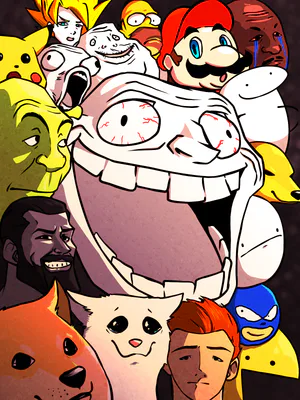
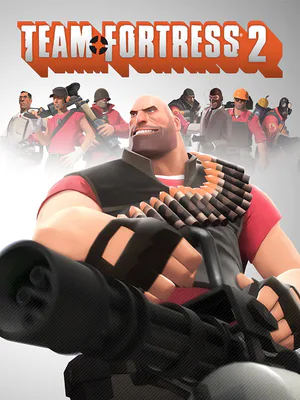
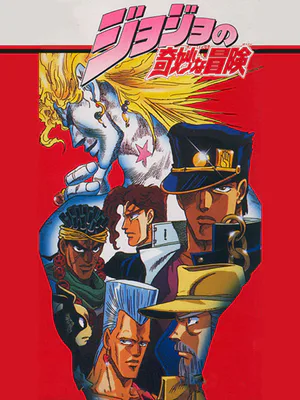


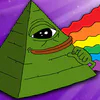
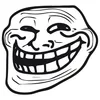
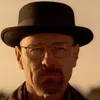




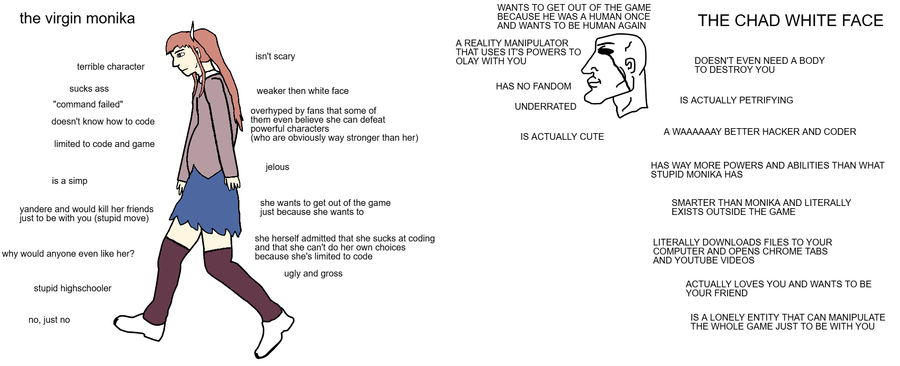

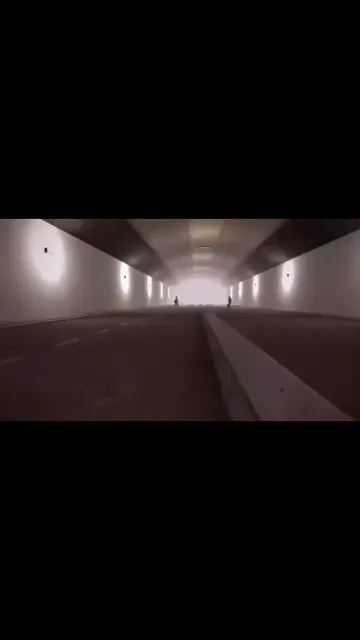





11 comments